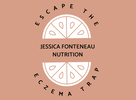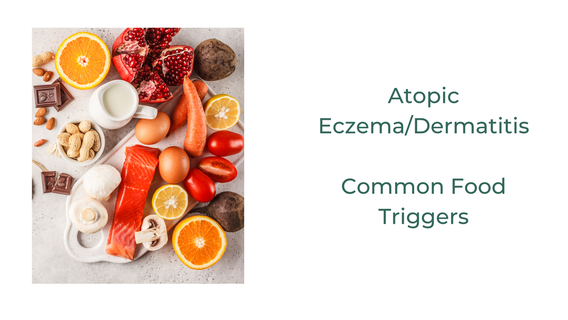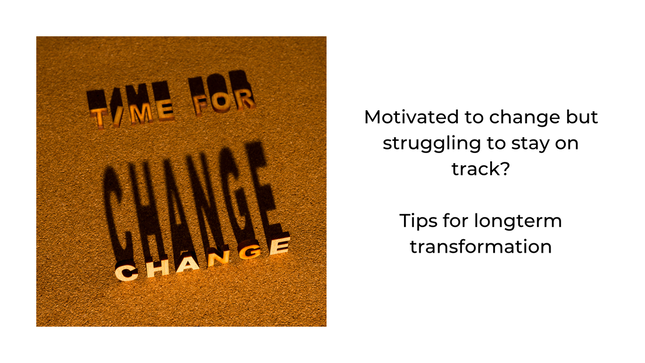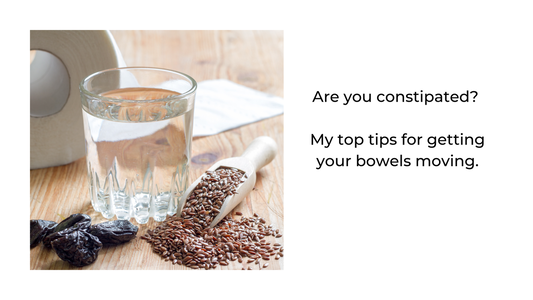ARTICLE Categories
All
|
|
Eczema, or dermatitis, is a non-contagious, inflammatory (meaning that the body’s immune system is activated) skin condition that usually involves a combination of itching, redness, oozing, raised bumps or blisters. Whilst not all types of eczema are the same, or have the same causes, this article covers their differences and some common food triggers.
Eczema flares can be ‘acute’, meaning that there is a sudden appearance of symptoms usually involving blisters and oozing, or chronic when the symptoms remain long-term but are drier in appearance with scaling and cracking. Most clients I work with report a mixture of both, chronic dryness with periodic acute flares. The above is, however, a generalisation, even dermatologists admit that in many cases, the exact eczema type cannot be diagnosed and that no two people will experience the same environmental or food triggers or the same eczema symptoms[1] Hearing that you have eczema is one thing but there are different types of eczema and these can be triggered by different things, so it is worth knowing the difference. Eczema being eczema, of course, many people have a combination of several types versus just one. Here is a brief description of the main different eczema’s: Contact Dermatitis Contact Dermatitis is an eczema that is triggered by direct contact with an allergen/sensitivity eg. nickel or fragrance. The eczema only appears around the site of the contact such as earrings, a watch, belt buckle, perfume or deodorant. Contact dermatitis usually resolves itself, within 5-7 days, once the irritant has been removed. Atopic Eczema Atopic Eczema is an allergic eczema that is often linked to asthma and hay fever and is particularly linked to itchiness. A blood test for raised IgE levels can be used to see whether a true allergy is present. Interestingly, however, not all patients with diagnosed atopic eczema show raised IgE, some may experience a food/environmental sensitivity or intolerance reaction.
About 20-30% of UK infants are affected by atopic eczema. Issues with a a skin barrier protein, filaggrin, was found, in 2006, to be strongly linked to atopic eczema.[2] Pompholyx (Dyshidrotic) Eczema Pompholyx/Dyshidrotic Eczema is linked to atopic eczema and appears as extremely itchy, pin-prick blisters on fingers and/or toes. Over time the blisters turn into scaling and crevasses often form. This form of eczema creates intense itchiness but scratching only worsens the symptoms. This form of eczema often appears in young adults and can be triggered by warmer weather. Seborrheic dermatitis Seborrheic dermatitis generally appears on the scalp and above the eyes. It is usually less itchy than atopic eczema and has been linked to yeast infections. Discoid (Nummular) Eczema Discoid eczema usually occurs in middle-aged/older men. If this form of eczema appears in younger patients then it is actually a form of atopic or contact dermatitis. This eczema forms in round-shaped patches and may leave a long-term, lighter skin tone patch after the eczema has cleared. Stasis (Venous) Eczema Stasis eczema is often found on the lower legs and is linked to problems with circulation and veins. Medical treatment is linked to resolving the vein condition and applying creams to the eczema. Neurodermatitis (Lichen Simplex Chronicus) Neurodermatitis is when skin becomes thick and leathery due to repeated scratching or rubbing, either as a habit or due to stress and it is usually found in a single patch either on the leg or back of the neck. Topical creams are usually the first line of treatment. A focus on Atopic Eczema and Common Food Triggers For those types of eczema that have an inflammatory, immune system response (atopic, pompholyx, discoid and seborrheic) it is useful to find out what your personal triggers are. It is important to note that eczema triggers are individual, during my many years in practice specialising in this area, I have found some common ground and some surprising triggers. My main advice would be to start keeping a food and symptom diary. This means noting what you have eaten during the 3 days preceding a flare. Here is a link to a free 'Food and Symptom Diary' tool I've prepared. The top 6 categories of foods that my clinical experience has identified as the most common are:
Caution, however, about starting to remove whole food groups from your diet, especially if you considering taking anything out of a child’s diet, as doing so can exacerbate the problem rather than alleviate it. My advice would be to work with a nutrition professional. I’ve also found that certain triggers follow what I could only describe as “trends”. For example, in my list above I have gluten, but truth be told, I am finding that it is featuring less and less as a potential trigger. I am, however, finding that triggers to almonds and soy are becoming much more common. Could this be a case of what we eat the most often has the potential to trigger atopic eczema sufferers more? Only time and research will tell. Read more:
My name is Jessica Fonteneau and as a Registered Nutritional Therapist MSc, I have significant clinical experience in supporting clients with digestive, skin and autoimmune disorders. In addition, I have undertaken further study and training in two specific areas:
www.jessicafonteneaunutrition.com [1] Lord RS, Bralley JA (2008) Laboratory Evaluations for Integrative and Functional Medicine, 2nd Edition, Canada. Metametrix Institute [2] Irvine AD, McClean WH (2006). Breaking the (un) sound barrier. The Journal of Investigative Dermatology. 1261200-1202
1 Comment
Do you ever start a diet/exercise routine/healthy habit with the best intentions but after a few days or weeks you start to slip back into your old ways. Do you wish that you could just stay on track? Apart from implementing a change, what are you doing to address your mind-set? Have you ever thought that you could be self-sabotaging thanks to unconscious barriers? How do you think you could find out what is holding you back, even if you aren’t aware of it? We all think that we can just willpower our way through it, but if we have subconscious barriers or values that are at odds with our objectives, all the willpower in the world won’t help us succeed. Let’s say you want to lose weight, but you are a sociable person. You can easily see how your objective and your value (sociability) are at odds with each other. I’ve had clients who are willing to suffer a severe eczema flare, rather than tell their friends that they can’t eat a certain food. Exploring our beliefs and barriers via health coaching, opens the doors for change. The concept of thinking about yourself can be very uncomfortable for most people. I mean why, if you could avoid it, would you want to examine your own navel? The thing is, that unless we do go on a voyage of self-discovery, it is impossible to move forward. Whilst we think that our logical mind is doing all the thinking, it is the subconscious mind that has the control. Our subconscious mind makes decisions based on past experiences, good or bad. It takes in cultural and societal norms. Its whole aim is to keep the status quo, to stick with whatever is comfortable and not rock the boat. Even if the change will bring a more positive outcome. Unravelling the decisions your unconscious mind is making without you even realising, is the way to open the door to change. Also, does this sound familiar? You’ve consulted a nutrition/health practitioner and you have all the information you need to reach your health goals. You leave the appointment all fired up, you do a meal plan, buy the ingredients, follow the plan for the first few days and then…. Life happens. You are invited out to a birthday party, or you have leftovers in the fridge that need finishing. You are travelling for work and there is nothing to buy at the train station apart from fast food options and the examples could go on and on and on. When I speak to my clients about previous attempts at changing their nutrition and lifestyle, a common theme is that when they are faced with these kinds of challenges, everything tends to go out of the window, and they give up. They know the what, but they can’t manage the how. When clients come to me and say that they are finding certain situations tricky when following their personalised health and lifestyle plan, my advice to them is to make an intention. Say you are going to a dinner party. If ahead of time you already make the intention of, let’s say having only one glass of wine, but accepting the nibbles or saying no to the bread but having a small portion of pudding, it’s easier to stick with than trying to make all those decisions on the hoof. After having practised as a Registered Nutritional Therapist for a couple of years, I realised that it wasn’t enough to provide the personalised nutrition and lifestyle plan. My clients needed to understand themselves so that they could be open to long-term change. At this point I trained in health coaching and my practice was transformed. I now offer health coaching as standard as part of my packages. The thing about health coaching is that it does require a person to spend time focusing on themselves. Some clients don’t see the utility or think that it is a form of self-indulgence. Do you think that it is an indulgence? In other words, do you think that spending time discovering more about yourself and why you are attached to certain habits is a waste of time? Do you think that if you just dug deeper and mustered a bit more willpower all would be well? The thing about health coaching is that it opens an understanding about yourself that you can apply to anything. You think that a certain tool might help you snack less and then you realise that you can use the same tool to help you procrastinate at work less. The tools and understanding you gain are with you forever and can be applied again and again as you enter different chapters in your life. It’s a life skill. Think of it like a guided prompt, conversations with yourself and tools that allow you to discover some things for yourself, specifically in relation to habits you have. Let me tell you about Sophie (name changed for privacy). She had just had her second child and wanted to lose the baby weight before going back to work. She was exhausted and didn’t have enough minutes in the day but was motivated to achieve her goal. To start off with I empathised with her lack of time and energy. However, when I realised that she was also struggling to follow the programme and was falling behind on her objectives, it was time to highlight how important the coaching side of the programme was. One of my favourite expressions is ‘you can’t pour from an empty cup’. You can’t help others if you aren’t looking after yourself. By her own admission Sophie was giving her all to her family, but was also short-tempered and impatient, because she had nothing left to give. She was also annoyed and felt guilty that she had invested in the programme but wasn’t getting the hoped-for results. We had a long chat about how devoting time to her own health and wellbeing would bring benefits not only to herself but also to all the family. She started to commit to the coaching exercises and was surprised how much easier and less time-consuming it made the whole process. Long story short, whilst she didn’t quite reach her goal by her self-imposed deadline, she was only just off it and had the benefits of more energy, patience, and serenity. She is also grateful for the tools that she now has for life to keep herself on track. Clients tend to think that health coaching is all about weight loss, but my biggest success was with a client who has been battling atopic eczema since she was 6 months old. Julie (name changed for privacy) came to me because she was desperate. Having atopic eczema flares on her hands and face was stopping her from living her life. She was so embarrassed to go out with puffy eyes and bleeding fingers and she was starting to isolate herself and refuse invitations. The thing is Julie knew that she reacted to certain foods. She had done tests with her dermatologist and had the lab results to prove it. Even with these official diagnoses the fact that eating those foods would ‘only’ trigger her eczema rather than an anaphylactic shock, meant that whilst she avoided those foods at home, she didn’t dare refuse foods when she went to others’ houses. So, she kept triggering the flare and it couldn’t never settle properly, causing pain and unhappiness. Working with Julie in a health coaching capacity made her realise that keeping her own inflammation at bay was critical and that with a little preparation and forewarning, her hosts wouldn’t be offended if she said no to something. She found that her friends were only too happy to find alternatives so that she could fully participate. The coaching also helped her make other changes to her diet that supported her skin health and now flares are rare. So don’t think that health coaching is only good for one thing. It is the key to habit change, whatever the reason you need to change your way of eating. Changing the way, we eat takes time. Firstly, because we have to find our own path of what suits us best, without compromising our health. Secondly because changing our habits in a life context that usually stays the same, takes time and guidance. That is why I’ve created a new online, self-guided course, called ‘Unleash the change. Discover the habits and barriers hampering your efforts’ and it’s for people that want change their habits sustainably and for the long term. The course will be available on 23rd February 2023, and I’ll be offering an amazing early bird price for those who get in early. The ability to pre-purchase will be available from 14th February 2023 and I’m so excited for you to see it because it’s going to help you succeed achieve your health and wellbeing objectives. If you aren’t already signed up for my emails which will be featuring an extra discount on top of the early bird offer, click here
Read more:
Interested in what I do and who I am? Go to my website: www.jessicafonteneaunutrition.com If you suffer from bloating, painful, hard to pass stools or infrequent stools (e.g., not every day) you or they may be suffering from constipation.
The most important thing you can do if you think you are suffering from constipation is to consult your doctor. Once you’ve been given the all-clear, it’s time to consider some ways to get things moving naturally. This article will cover:
What is a ‘normal’ bowel transit? All foods break down at different rates, moving through the stomach to the small intestine and onto the colon at their own individual speed. Each ingredient from a meal e.g., protein, vegetables and carbohydrates will each arrive in the colon at different times. None of us is average, but research has found that – on average – digestion happens at the following rates:
One to three bowel movements per day is considered normal. If you aren’t passing a stool daily, then it may be time to introduce things that may set that right. The importance of hydration Drink more water - our stools need to be bulked out with water to pass through the gut smoothly. Drink regularly throughout the day rather than a lot in one go so that you are regularly hydrating yourself and your stools. Fibre, the magic ingredient. Whilst many nutrition facts have changed over the years the one thing that hasn't is the importance of fibre. Did you know that you should be aiming for 30g of fibre per day? The average European can barely make 15g. Soluble and insoluble fibre – what’s the difference? Insoluble fibre is considered gut-healthy fibre because it normalises peristalsis (the muscle movement that carries your food through your digestive tract and out) and adds bulk to your stool, helping prevent constipation. Insoluble fibre does not dissolve in water, which means it passes through the gastrointestinal tract relatively intact and speeds up the passage of food and waste through your gut. Insoluble fibres are mainly found in whole grains and vegetables. Soluble fibre binds with water and forms a gel, which slows down digestion and eases the passing of a stool. Soluble fibre delays the emptying of your stomach and makes you feel full, which helps control weight. Slower stomach emptying may also affect blood sugar levels and have a beneficial effect on insulin sensitivity, which may help control diabetes. Soluble fibres can also help lower LDL (“bad”) blood cholesterol by interfering with the absorption of dietary cholesterol. Soluble fibres can be found in food sources such as oats, peas, beans, apples, citrus fruits, carrots, barley, chia seeds and psyllium. How to get enough fibre An average sized orange contains 3.1g of fibre, a 100g portion of cauliflower is between 1.6g, kale has 3.1g per 100g and raspberries knock them all out of range with 6.5g, so it can be difficult to judge your intake. To make it easy you should aim to eat 7 portions of fruit and vegetables per day. I usually recommend 5 portions of vegetables and 2 portions of fruit. You should also include of nuts, seeds, whole grain breads, cereals, beans, and lentils which all contain decent amounts of fibre to boost your intake. It is important to note that fibrous foods are fantastic, but they do need water to help move them along, so go back to my first recommendation. Don’t forget to hydrate! It’s all in the movement Regular exercise and frequent movement are both vitally important to maintain a healthy lifestyle and a state of equilibrium. Without exercise our bodies become sluggish, and this reflects in the state of our gut and the length of our digestion process. Exercise can also help the mechanical part of digestion, peristalsis. The muscle waves that propel the food from your digestive system to the exit. In summary, here are my top tips for relieving symptoms of constipation: Please do not introduce all these options at once, but gradually add one change at a time and note how you feel.
Speak to your medical practitioner/nutritional therapist or pharmacist adviser for further guidance. If on medication, please speak to your GP/consultant before making any changes to your diet. Read more:
My next newsletter will feature an early bird offer for my brand new online, self-guided course ‘Unleash the Change. Discover the habits and barriers hampering your efforts’. Sign-up now to benefit. Interested in what I do and who I am? Go to my website: www.jessicafonteneaunutrition.com |
AuthorI’m Jessica Fonteneau, I’m the eczema specialist and I help people Escape from the Eczema trap. Archives
April 2024
Catégories
All
|





 RSS Feed
RSS Feed